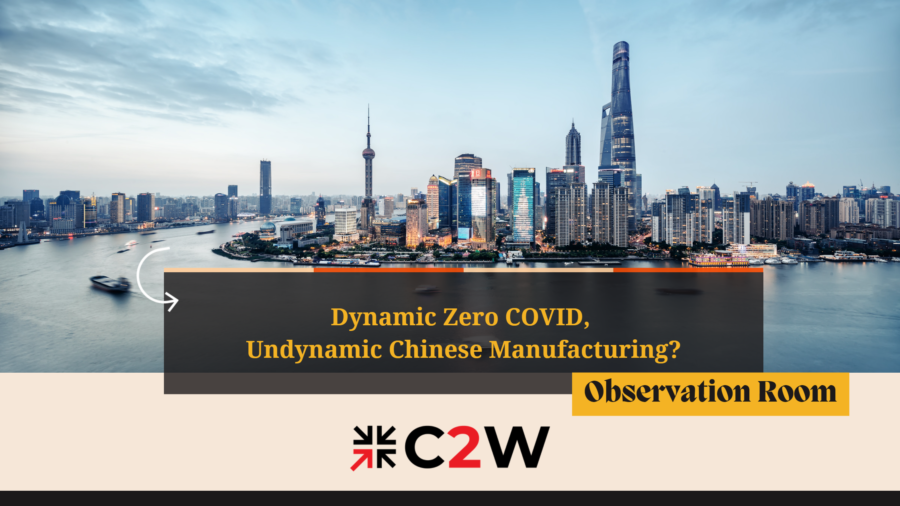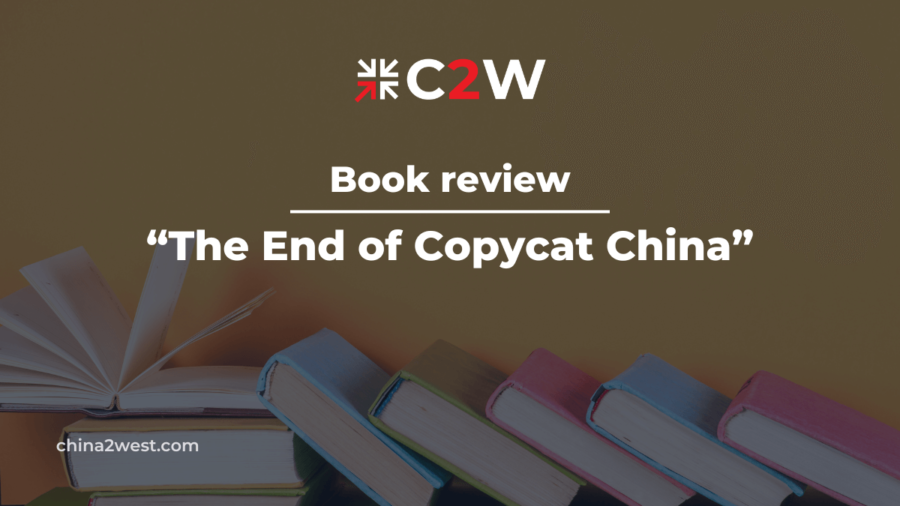The chaos of the Shanghai lockdown seem to finally trigger the public outcry about COVID fatigue.
It is not just the never-ending physical confinement in their apartments, or dire food supply that attribute to criticism on handling of the outbreak.
Pretty much all economic activities have come to a halt in the most affluent, productive, international and populous city of the world’s second largest economy.
To make matters worse, its economic nature is so outward, mostly motivated by manufacturing, logistics and finance, that isolation from the outside world is feeding into worsening livelihoods of so many in Shanghai.
The impacts are not limited to the city of over 24.9m inhabitants.
Global supply chain also raises great concern as Shanghai also owns the world’s busiest port.
With the record-breaking inflation in the US, this is adding salt to the wound.
Meanwhile, we also keep seeing upticks of cases in other areas of China, some of which are major manufacturing hubs. As always, mass testing, mandatory quarantine and travel restrictions are still so far the major responses.
That inevitably leads to certain levels of disruption to manufacturing.
All these have sparked a heated debate over the sustainability of this policy in face of the Omicron variant and economic bleeding.
But the country’s top leader just recently came out and reaffirmed his stern stance on “Dynamic Zero”, seemingly crushing dissent on the policy, which many view as a pessimistic sign for China manufacturing.
But is China manufacturing really at such a critical point?
Where is China manufacturing at this point and How did we get here?
It is going through some difficult time, obviously.
No one can deny the fact that China did take some sweet time to enjoy the fruits of its once very successful pandemic control when it became the first country to come out of a critical nationwide outbreak.
Businesses around the world pretty much had no choice but to turn to China to produce their products as the World’s Factory was the only factory up and running.
That was especially the case for Southeast Asia, a rising force which had since long taken over many manufacturing sectors from China.
Even China was surprised by that, as it initially put forward the “Internal Circulation” Strategy to brace for the downturn of global economy by boosting the underperformed domestic demand, but later changed to “Dual Circulation”, placing equal emphasis on export.
That’s why the Zero Tolerance strategy has never been really questioned by anyone in China as it apparently had its great perks, protecting both lives and the economy.
But the virus is tricky enough to keep mutating and upping its contagious level exponentially, which is making it more and more difficult to be fended off from the country of over 1.4 billion.
Finally, here comes the Omicron, a variant which is way more contagious but seems much less severe.
With the increasing inoculated worldwide population, most countries decided it was about time to call it “endemic”.
Naturally, things are getting back on the pre-COVID track, including outsource manufacturing.
Just this last quarter, Vietnam’s export amounted to $89.1 billion, surpassing Shenzhen, one of the largest electronic manufacturing hubs in the world, which saw a decrease of 2.6% for the Q1 of 2022, citing COVID lockdowns that happened in March, let alone the disappointing numbers released for the China manufacturing.
For those against “Zero COVID Policy”, it is an alarming wake-up call, as well as a timely argument to push for this agenda.
The impact was still not fully reflected in the numbers of Q1 yet, as it wasn’t until April that Shanghai had come into full lockdown.
The disruption to global supply chain thus caused may not kick in yet until sometime this month.
Why is the Shanghai lockdown a trigger for debate?
As we mentioned above, Shanghai is pretty much the representative of the advanced and powerful dimension of China.
That’s why Shanghai’s situation turned out so shocking, especially due to the fact that it was always been praised for its much more precise and less restrictive style of pandemic control.
Shanghai residents always take pride in its comparatively more liberal and tolerant governing style, but now is a moment of disillusionment.
For foreign businesses, they are no longer sure if this will still be a friendly environment.
European Chamber of Commerce in China released a survey that shows almost 60% of its members expect a revenue decrease for this year.
But the recent policy may indicate something deeper than the policy itself, and there may be more politics behind it, according to some analysis.
The readout delivered last Thursday is speculated to be a warning against the opposition force within the party, as a similar readout in March has addressed limiting the impact on economic development in a much less critical tone.
Critics on social media also think the policy has been more or less politicized, as this has become a divided issue with two schools of thoughts labeled as pro-western and pro-isolationism respectively. The recent readout further demonstrates the divisiveness of this issue, even within the core power circle.
Good signs for China manufacturing we can expect?
The recent situation may seem clouded with uncertainties and disturbance, but there are still good signs of a way out.
Tesla’s Second Production Plant to be Located in Shanghai
There’s nothing more reassuring than a manufacturing giant showing massive confidence in the city.
Back in February, Reuters already reported Tesla’s plan to open a second production plant in Shanghai.
The recent letter sent by Tesla to the Shanghai government, obtained by Reuters again, confirms the plan.
The whole vehicle supply chain in China is highly concentrated around Shanghai, and apparently it is in jeopardy.
This news seems to set a very convincing tone to restore the trust.
But it’s noteworthy that Tesla has not announced the plan yet, but Reuters got the scoop exclusively.
It is speculated that the plan might be intentionally released for certain publicity purposes, as at this point it is not set in stone yet.
But at least a plan is made, so this is somewhat still very promising.
More Alternatives for Shanghai Port Come Into Play
After months and months of congestion at the ports located in the Los Angeles Area, the goods stuck outside have finally been reduced to 40 and the wait time at Shanghai has been significantly cut down to 2-3 days.
Even with the current situation going on, it’s still lower than the peak during the third quarter last year, according to what S&P Global Market Intelligence said in an emailed report.
Shipping giant like Taiwan-based Yang Ming Marine Transport Corp. also expressed favorable anticipation for smooth transportation in the second half of the year, as he said in an interview.
But this is also a great opportunity for other ports in China.
The country is world renowned for its ambitious and state-of-the-art infrastructure, including ports.
7 out of 10 busiest ports in the world are in China.
That’s an indicator for rising potential, especially when many of them are located in major manufacturing hubs in China, such as Guangzhou and Shenzhen.
When Shanghai becomes a no-go, there are also plentiful others for emergency backup.
Reopening Is Still Possible for Late This Year
It’s a cultural and political norm people in China are pretty used to.
Before major events among high-level officials in Beijing or congress in China, or any politically important anniversaries, everything seems to tighten up a bit for risk management.
This year marks a very strategic year for the ruling party as the 20th National Congress Meeting will be held in the second half of 2022.
The meeting will decide the next administration for China in the next five years.
Due to its critical nature, especially when it’s defining moment for the top leader of China, social stability will be the priority over everything else.
The recent reaffirmation of the Zero COVID policy may be the result of that, as many analysts also think.
We can still have hope for a certain level of restriction ease after it’s over.
China has always been one of the biggest beneficiaries of globalization and free trade.
Its economic structure is greatly founded on opening policies and the outward nature is irreversible.
So worst case scenario, even as the new cold war is right on the rise and the pandemic control is getting more and more challenging, manufacturing is still the industry China will spare no effort to save.
That is to say, given its cost-efficacy, infrastructure, skilled labors and comparatively political stability, China manufacturing is still a very viable option.
It may have its trying moments once in a while, but it always manages to get over.
All you need to do is find a reliable partner to prepare for the uncertain.
C2W is your go-to expert for China and Southeast Asia manufacturing solutions. Contact us if you’re interested!


